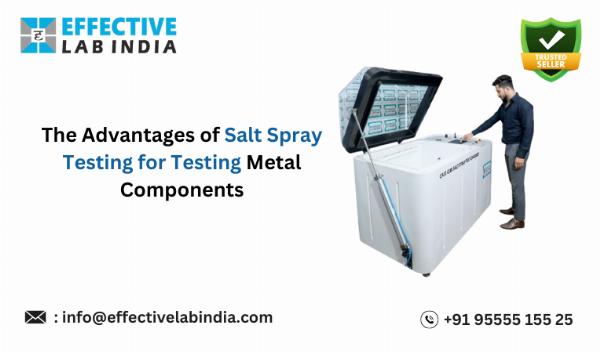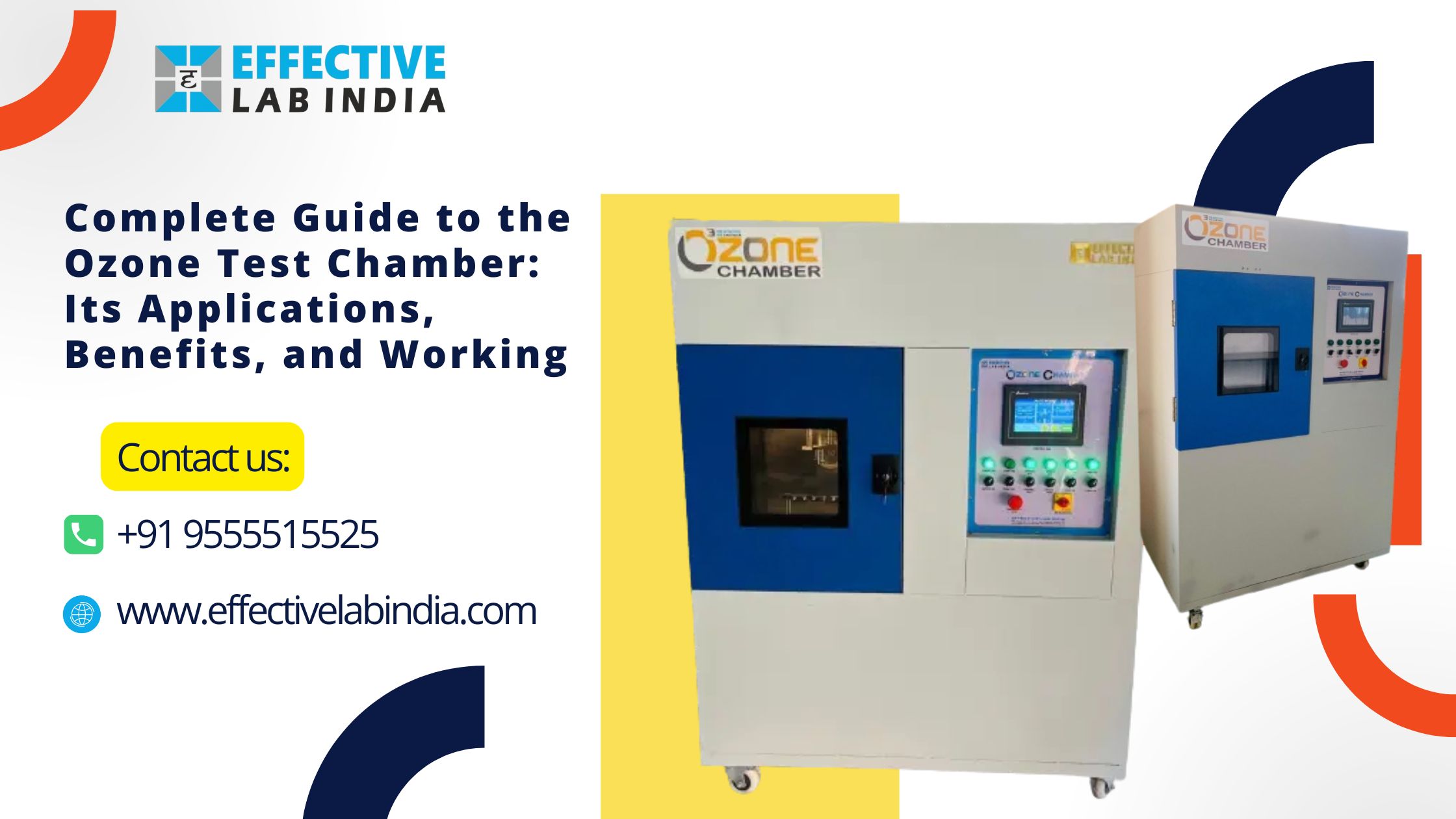The Advantages of Salt Spray Testing for Testing Metal Components

Strong 8k brings an ultra-HD IPTV experience to your living room and your pocket.
Every sector uses top-notch testing equipment to assist manufacturers in finding flaws and produce goods that are of the highest calibre. It is crucial to evaluate a product's longevity against factors that might cause corrosion in industries where metal is the primary component utilised in manufacture. Salt spray testing is one of the most reliable techniques for assuring the robustness and dependability of metal components. This procedure, which is vital to many sectors, aids in forecasting the resistance of materials to the damaging effects of corrosion. Let's explore the field of salt spray testing and learn about all of its benefits.
Do You Know What is Salt Spray Testing?
A standardised procedure called salt spray testing, sometimes referred to as salt fog testing, is used to evaluate the corrosion resistance of materials and surface coatings. This test provides information on the long-term performance of metal components by simulating extreme environmental conditions. The practice of salt spray testing dates back to the early 1900s, when it first emerged as a trustworthy method for gauging metal corrosion behaviour.
How Salt Spray Testing Works
Metal samples are subjected to a thin mist of saltwater solution in a controlled setting as part of the salt spray testing procedure. Here's a detailed explanation:
Testing Procedure: The testing procedure involves placing metal samples in a testing chamber and continuously spraying them with a saltwater solution, usually with a 5% sodium chloride content. This setting is similar to industrial or seaside settings where corrosion caused by salt is frequent.
Equipment Needed: A salt spray chamber, a salt solution reservoir, and a misting nozzle system are needed for the test. To guarantee uniformity, temperature and humidity are precisely controlled.
Standard Procedures and Protocols: Testing standards, such as ASTM B117 and ISO 9227, provide guidelines on the duration and conditions of the test. These standards ensure that results are comparable across different laboratories and industries.
Comparing Other Methods with Salt Spray Testing
Testing with salt spray is not the sole way to evaluate corrosion resistance. This is how it stacks up against alternative methods:
Humidity testing: Does not replicate exposure to salt, but rather concentrates on corrosion caused by moisture.
Cyclic Corrosion Testing: To replicate more realistic climatic cycles, this method alternates between dry, wet, and salt spray environments.
Real-World Exposure Testing: This type of testing is less controlled and takes longer since it involves placing samples in real outside environments.
Standards and Certifications
Adhering to industry standards is crucial for reliable testing:
ISO Standards: ISO 9227 specifies the method for salt spray tests.
ASTM Standards: ASTM B117 is a widely recognized standard for this type of testing.
Industry-Specific Certifications: Different sectors may have their own certifications to ensure compliance with specific requirements.
Preparing Metal Components for Salt Spray Testing
To get reliable results, preparation is key:
Pre-test procedures: To get rid of any impurities, clean and degrease the samples.
Sample Preparation: Make sure the sample's size and shape are consistent.
Typical Problems and Their Fixes: The way that problems like sample placement and solution concentration are handled can have a big impact on test results.
Tips For Getting Best Salt Spray Test Results
Proper Sample Preparation: Clean and degrease samples thoroughly to remove any contaminants that might skew results.
Consistent Conditions: Maintain controlled and consistent temperature, humidity, and salt concentration in the testing chamber.
Standardized Procedures: Adhere strictly to industry standards like ASTM B117 or ISO 9227 to ensure reliable and comparable results.
Regular Equipment Maintenance: Ensure that testing equipment is calibrated and well-maintained to avoid inaccuracies.
Accurate Documentation: Keep detailed records of test conditions, procedures, and results for accurate analysis and decision-making.
By following these guidelines, you can ensure more reliable and valid salt spray test outcomes.
Salt Spray Test Chamber Specifications
Chamber Temperature Range - Ambient to 40°C
Power - 220V, Single phase, 50Hz, 15 A
Test Air Pressure - 0.7kg/cm²-1.2kg/cm²
Test Chamber Temperature Range - 35°C ± 2°C
Chamber Temperature List Count - 0.1°C
Temperature Control - Inbuilt PID Temperature Controller
pH value of Salt Solution - 6.5 to 7.2 pH
Air Saturator Temperature Least Count - 0.1ºC
Air Saturator Temperature Repeatability - ± 2ºC
Available Size - Models Available - Digital, HMI, Jupiter & Cyclic
All Models Available - Digital - 250
All Models Available- Digital - 450
All Models Available - Digital - 1000
Inner Dimensions (mm) - 780X620X720, 1540x1070x1300, 950x700x720
Outer Dimensions (mm) - 1800x1250x1250, 1500x960x710, 2370x1400x1350
Salt Spray Chamber HSN Code
Effective Lab India salt spray chamber's Harmonised System (HS) code is 90248010. This code applies to equipment and devices used for testing, such as salt spray corrosion tests. This categorization ensures correct identification for customs and tariff reasons, helping to standardise the worldwide commerce of such equipment.
For further details on its features, salt spray chamber price, and technical specs, contact us by email at [email protected] or by phone at +91 9555515525.
Note: IndiBlogHub features both user-submitted and editorial content. We do not verify third-party contributions. Read our Disclaimer and Privacy Policyfor details.







